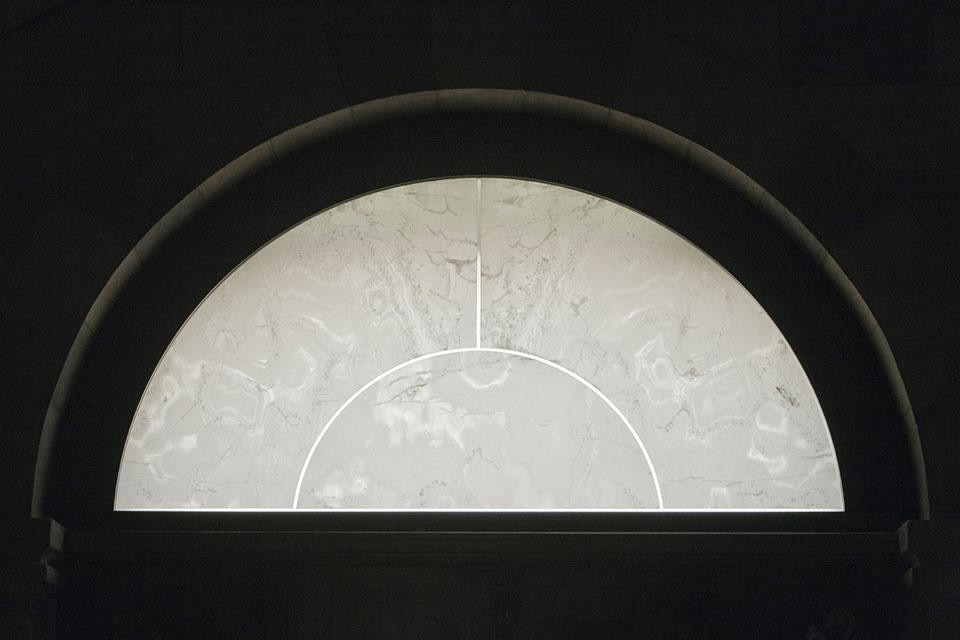Pawson's first contact with the Benedictine community in Hungary came in the form of a letter from its abbot, received in the summer of 2006. In his letter, Father Asztrik described a visit he and a fellow brother had made to the Cistercian Monastery of Our Lady of Novy Dvur in rural Bohemia, where Pawson had already been working for seven years: "The purpose of our journey was… to see the monastery with our own eyes, whose construction we had observed from a distance. And we were not disappointed. We felt at once that it has so much in common with our thirteenth century church, built in the Cistercian style by Italian and French builders. There was joy in the community at home, that we have found the architect who understands both the ancient language of spaces built in the Middle Ages and the demands that spring from the living prayer of a monastic community".
By the time of Father Asztrik's letter, the monks had already reflected deeply on the priorities for their church, beginning by analysing the three major periods of its creation and transformation. The core of the Pannonhalma basilica was constructed in the early part of the thirteenth century, for a relatively small community. During this period, the building functioned solely as a context for Holy Mass and the eight divine offices of the monastic day. The monks characterised a strength of the medieval architecture as being its "use of symbols rather than didactics, which enables it to be universally intelligible and in some ways makes it modern".
By contrast the extensive restoration programme undertaken during the 1860s by Ferenc Storno had, in the community's view, fragmented this holistic and symbolic architectural language and "replaced it with allegory, didactics and historicism, to which the medieval space provides provides an excellent romantic backdrop". The third significant period of change during the twentieth century, conducted in the wake of the reforms of the Second Vatican Council, had concentrated liturgical activity into a small area in the centre of the church, stripping the sanctuary and the crypt of liturgical purpose. Key aims of the planned twenty-first century intervention would be to recover what the monks had identified as having been lost, in terms of visual simplicity, symbolic holism and functional coherence, in the process recalibrating the relationships between congregation, altar and celebrant and restoring clarity to the ascending section and axial plan of the church that symbolises the individual's ascent to God.
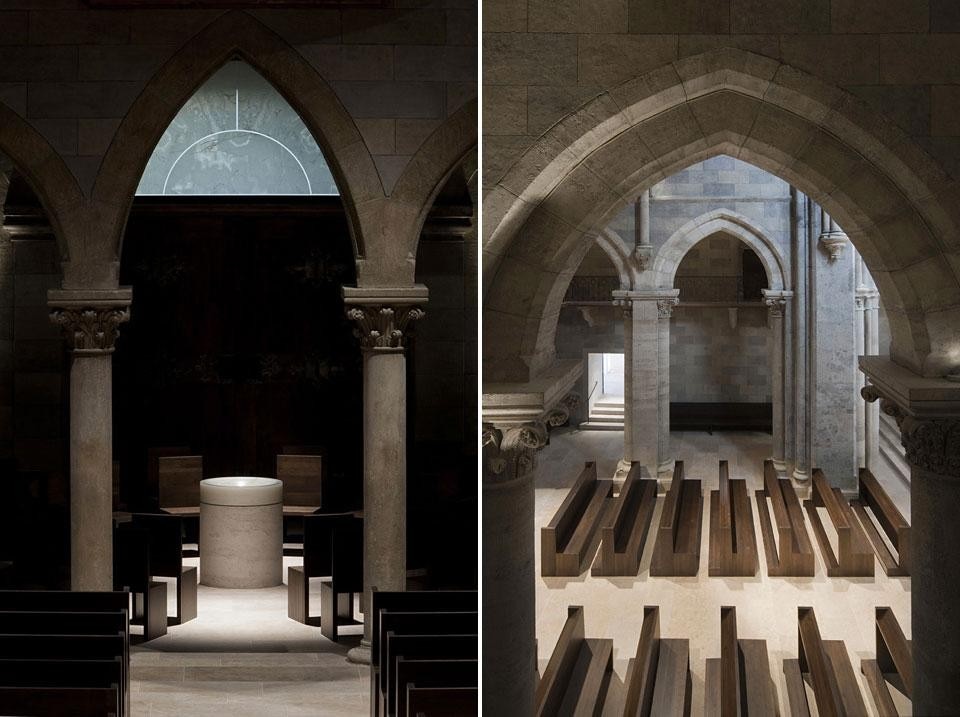
In terms of function, the planum is the crucial central arena of activity within the main body of the church, where the liturgy is celebrated and special services, including solemn profession and funerals, held. An easily identifiable problem here was lack of space. Removal of the over-scaled and functionally obsolete pulpit, built when the church was used as a cathedral, immediately freed up additional floor area. Further spatial alleviation has been achieved by increasing the gradient of the steps to east and west, consistent with the configuration of the earlier medieval stairs.
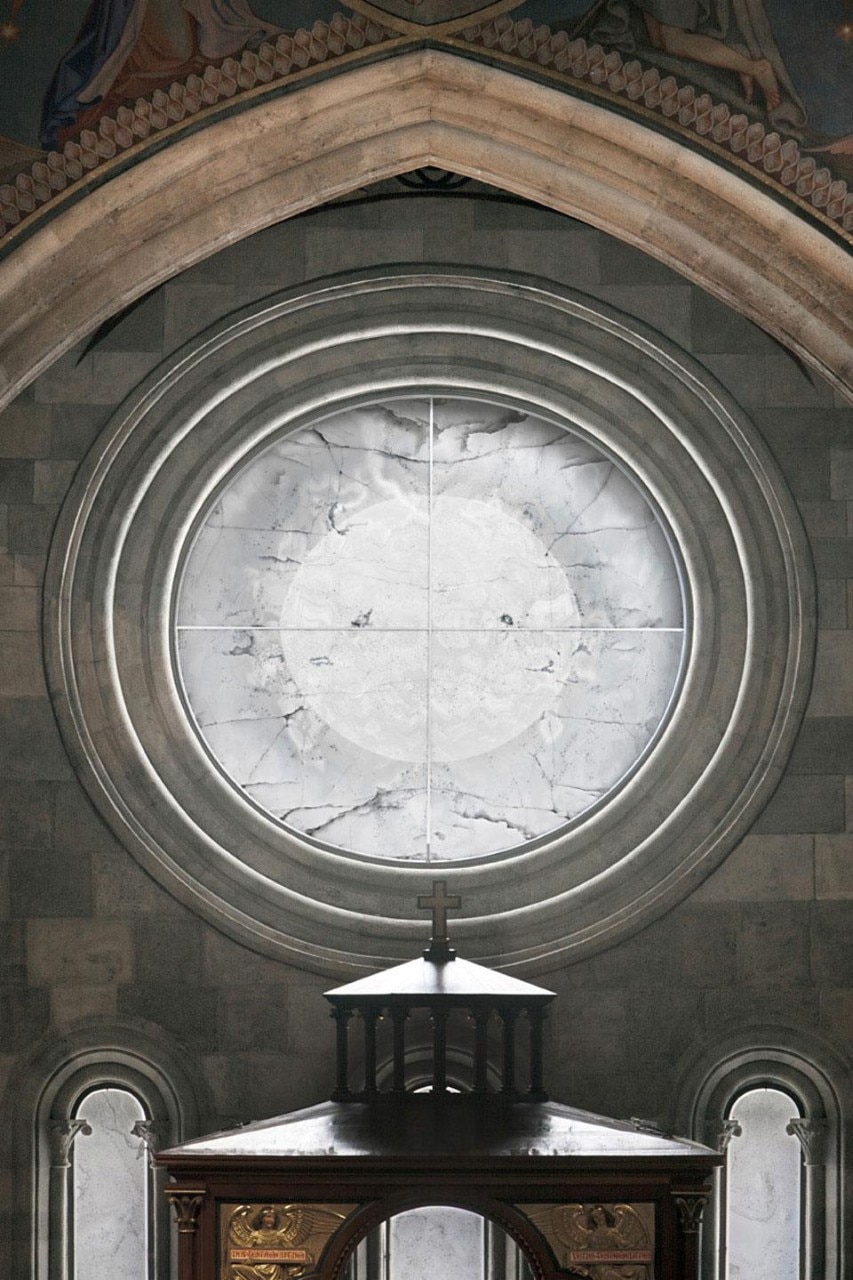
Storno's intervention was at its most problematic where surface finishes were concerned, since they took the basilica so far from the monks' ideals of thirteenth century simplicity. While the ceiling frescoes have been cleaned but otherwise left, the decorative paintwork on the east wall of the sanctuary has been covered. The areas of wall where Storno had applied ash to exaggerate the character of the stone have been cleaned to produce a more even tone and the rendered walls restored, to correspond more closely with the warmer hues of the natural stone. A new pale limestone floor is laid throughout. The new pale limestone sourced from a quarry in Süttö, in northern Hungary — supplied in solid blocks as well as slabs, for use in the fabrication of steps, benches and plinths — acts as an important anchoring element, mediating between new and historic elements.
It takes time to evaluate change. Pawson's work at Pannonhalma will inevitably be experienced most keenly and most intimately by the monastic community itself, but its impact will also be felt by pupils of the school, the local population, pilgrims, musicians and concert-goers
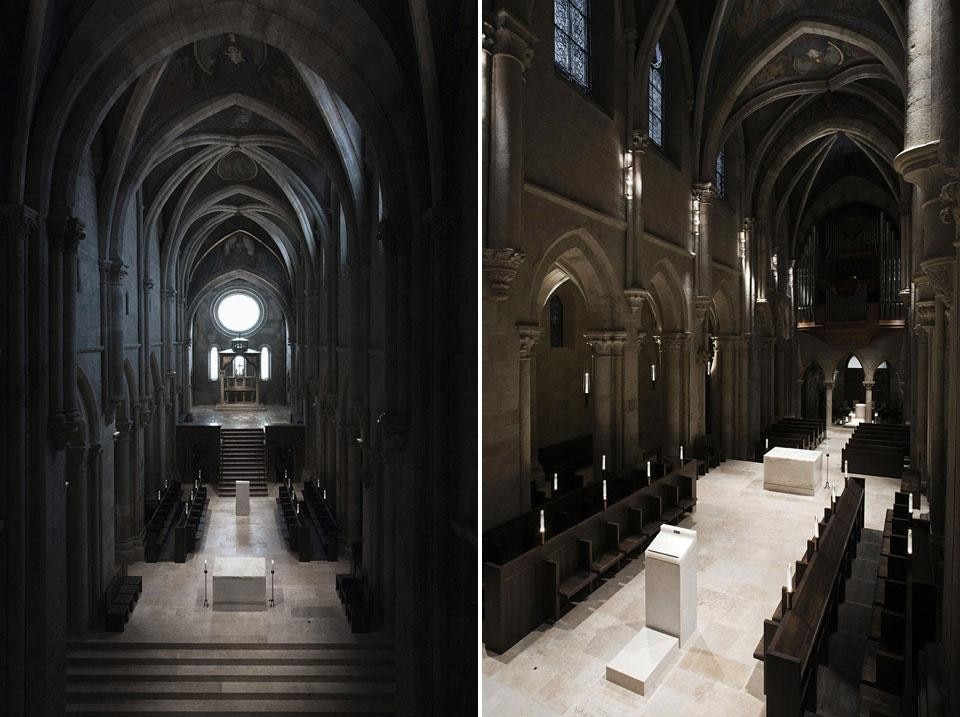
The new rose window becomes the logical point of transcendence in a theological narrative sign-posted in onyx. From the onyx font at the west end the eye is led through the nave, past a succession of key landmarks, including the altar, the lectern and the three arched windows of the apse, upwards to the celestial circle of light. A common construction language unites all of the new liturgical elements, each piece being fabricated from elements cut from blocks of two varieties of stone — a limestone plinth supporting an onyx top.
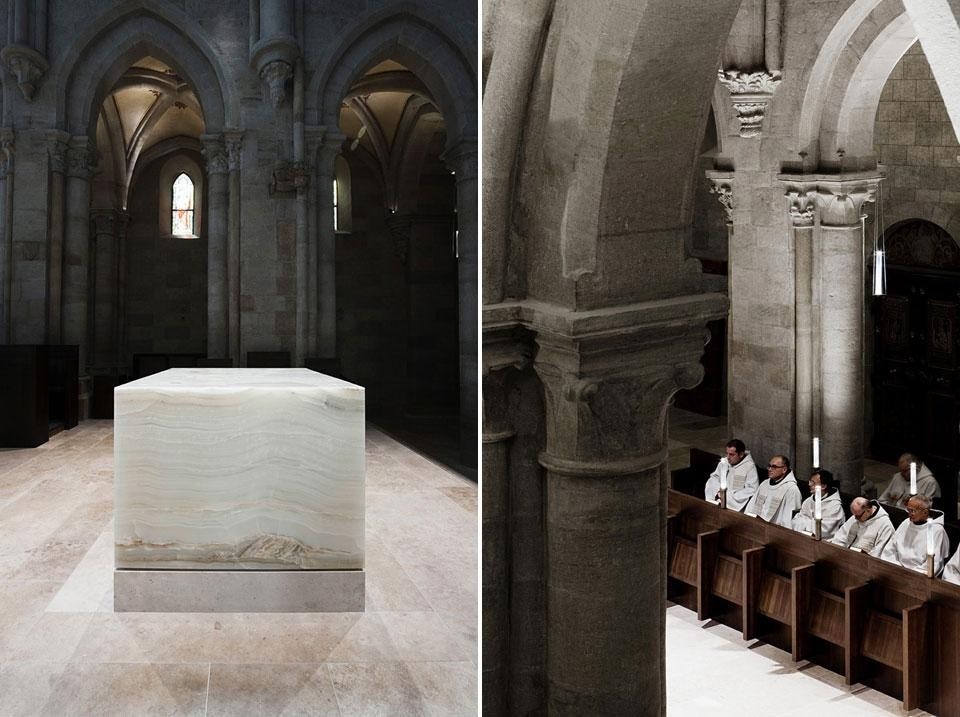
John Pawson: Archabbey of Pannonhalma, Hungary
Design architect: John Pawson
Project architects: Stefan Dold Anna Schulenburg
Lighting design: Speirs and Major Associates, Mark Major, Philip Rose
Executive architect: 3h architecture
Zsolt Gunther, Katalin Csillag, Orsolya Pataj, Tamás Tavaszi
Structural engineering: András Vándor, Emese Olosz
Mechanical engineering: ÉGTI 2003, Imre Benko
Electrical engineering: OHM-PLAN, György Sleiner
Lighting consultant: Be light Kft., Zoltán Morvai, Gergely Papp, Péter Farkas
Acoustic consultant: aQrate Kft., Andor Tamás Fürjes
Built Area: 650 square metres
Project timeframe: 2006–2012


